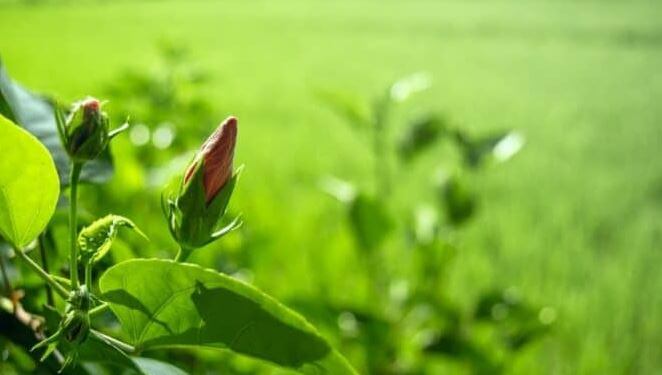Last Updated on June 4, 2023 by a Friendly Gardener
Most people purchase hibiscus plants for their gardens because they want those beautiful blossoms in their yards. A hibiscus plant will flower during the summer season, so if your plant isn’t flowering, there’s a reason.
Why Is my hibiscus not blooming? Here we list some of the most common reasons that hibiscus plants do not blossom and what you should do to encourage your plant to produce those show-stopping blooms.
Excessive Shade
A hibiscus needs generous full sunlight exposure to flowers. If your hibiscus plant is located in a shady spot, it will accrue less energy, and this plant needs a good amount of energy to produce its famous blossoms. Hibiscus plants are native to Asian tropical environments where warm humid climates and full sun are the rules.
When selecting a spot for your hibiscus, select a location that affords a minimum of six hours of full sunlight. It makes no difference if you have selected a Hibiscus rosa-Sinensis or a Hibiscus spp. Both species need full sunlight to flower.
If your Hibiscus is getting too much shade or you are cultivating it indoors without adequate light, this will stress the plant and inhibit flowering. Move your plant if necessary. When cultivating indoors, make sure the plant is positioned in a sunny window.
Excessive Phosphorous
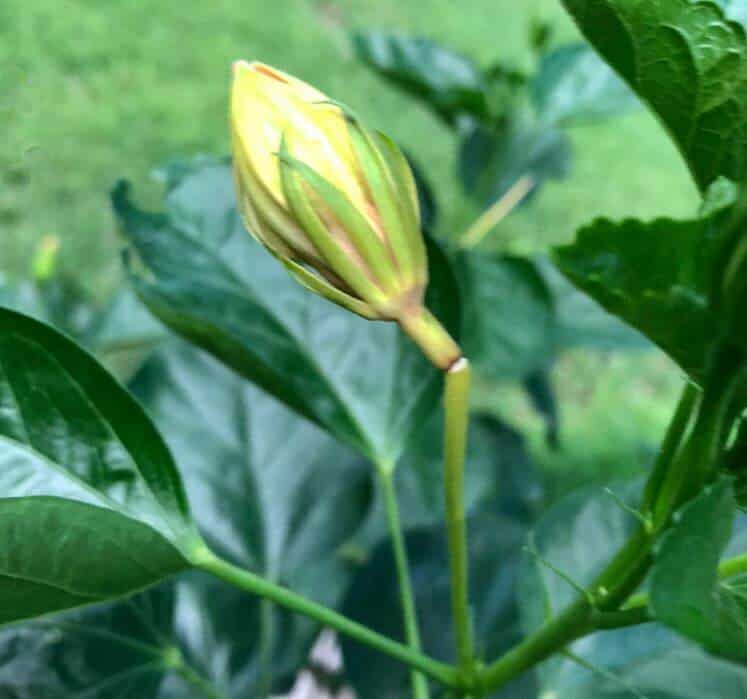
Phosphorous is a sought-after ingredient when selecting commercial fertilizers. Known to boost flowering in other plants, they can be counterproductive in the case of the hibiscus plant. The hibiscus is exceptionally sensitive to soil containing phosphorous buildup. In the case of the hibiscus, excess phosphorous will interfere with the plant’s root system absorbing other essential nutrients. This lack of necessary nutrients not only will impede flowering but can eventually prove fatal to your plant. Another symptom of excessive phosphorous is also yellowing foliage.
Any fertilizer you choose needs to contain a balanced ratio of nitrogen, phosphorous, and potassium, otherwise identified as “NPK”. Avoid overusing commercial fertilizer. Experts recommend improving soil bed fertility by mending soil with aged manure or organic mulches. Hibiscus sensitivity to phosphorous can prevent a plant from blooming, so consider this if your hibiscus is not flowering.
Excessive Nitrogen
Commercial fertilizer use can also be a problem if nitrogen content is too high. Nitrogen will stimulate your hibiscus plant to grow generous and beautiful foliage, but bloom production will suffer as a result. Any fertilizer application should be moderate. Excessive fertilizer application can increase the hibiscus’s susceptibility to aphid or pest attacks. Pests will suck the plant’s sap and the bud will drop before opening.
The hibiscus does require generous feeding, so the temptation to use a commercial fertilizer will be strong. However, a better solution is to use organic mulch, manure, or leaf mold to increase soil fertility. If you must opt for commercial fertilizer, dilute a well-balanced liquid fertilizer to half its strength and apply only monthly during the growing season of spring and summer. If your plant has lush foliage growth but struggles to flower, consider reducing your fertilization calendar.
Improper Pruning
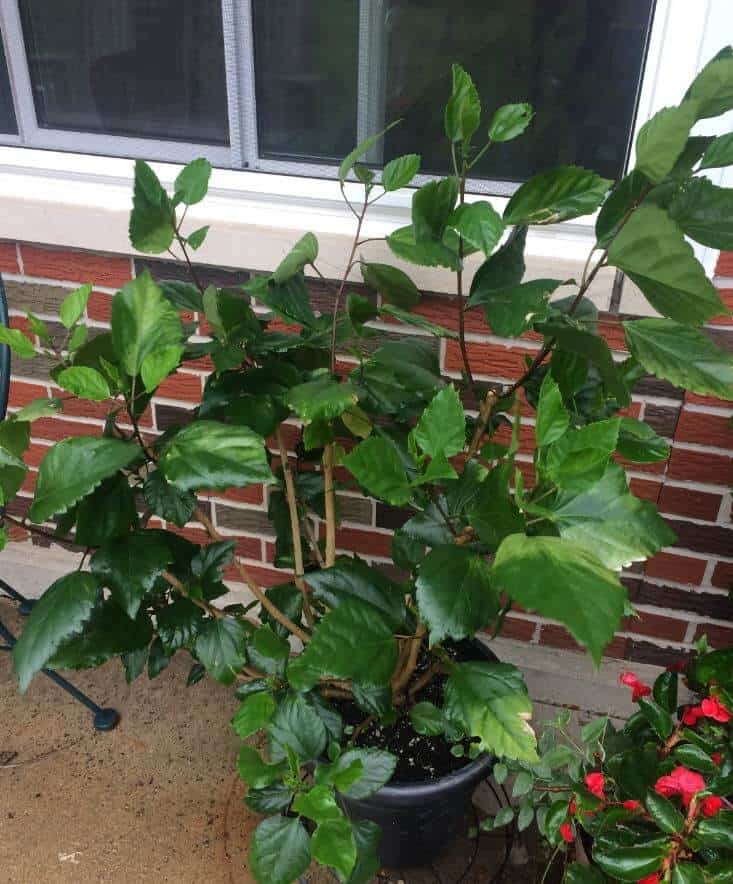
Hibiscus flowering is dependent on new growth, so if you prune at the beginning of spring or during the plant’s growing season, your plant may delay flowering or not produce any flowers at all. The delay of blooming can result in your plant flowering in the fall when temperatures have already begun to cool. This will cause flowers to drop or wilt rather rapidly. If you need to prune your plant, do so at the end of the growing season in the fall (September or October). This will aid new growth that appears in the spring to support flowering.
Container Cultivation
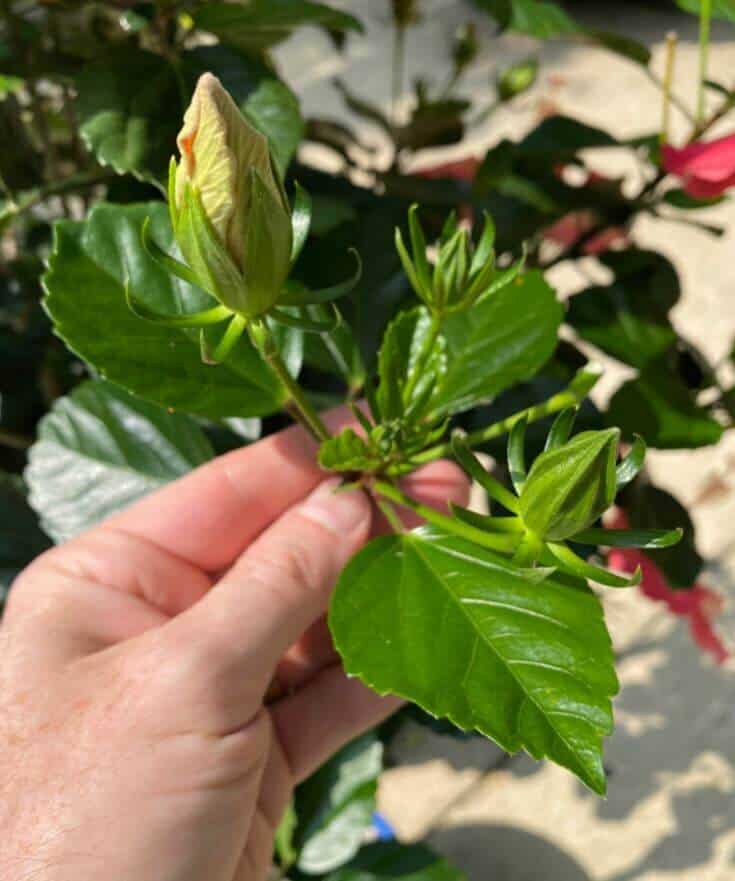
Container cultivation of hibiscus plants can experience the same problems as garden cultivation; however, it does have some specific risks of a hibiscus plant not flowering that is connected to the use of containers. If a potted hibiscus does not flower it may be due to:
- Your plant is thirsty, and the pot dries out too quickly. A hibiscus thrives in consistently moist soil but needs full sunlight. If evaporation dries out the container soil, this will stress the plant causing it not to flower.
- A lack of soil nutrients or compacted soil conditions due to being in the same pot for too long.
- Your plant is root bound.
- The container does not guarantee adequate drainage. A lack of drainage holes, or too few holes will cause roots to sit in water. This can suffocate roots or lead to root rot which will inhibit flowering.
Repot your hibiscus plant in a new, slightly larger pot with fresh soil.
Environmental Temperatures
Hibiscus plants are tropical plants, so they need warm, humid, sunny climates. The two commonly grown species are the tropical type, Hibiscus rosa-Sinensis, and the hardier kind, the Hibiscus spp. The tropical species will not tolerate cold temps and needs a humid, warm environment. These can be cultivated in USDA hardy zones 9 through 11.
The hardier species have more tolerance for a wider range of environmental temperatures. If your hibiscus is not flowering, check to see if you have the proper species for your climate.
Insufficient Water

In their native habitats, hibiscus enjoys frequent rains. If your plant is thirsty, it will be stressed and may not flower as a result. Check for these watering issues:
- You are underwatering your plant. The soil should remain evenly moist.
- Your soil bed is too rocky or sandy and does not retain sufficient moisture.
Soak your plant and then surround the plant base with mulch to aid in moisture retention. How often you water will depend on your climate.
Inadequate Drainage
Whether cultivated in a garden or a pot, the soil must be well-draining. Compacted soil or clay-based soils will allow water to stagnate around root systems. This will impede flowering and create conditions for fungal infections to take hold. If the soil type is incorrect, replant your hibiscus in a more appropriate type of growing medium. If the soil bed is retaining excess water, reduce watering to allow your plant’s roots to dry out.
Pest Infestation
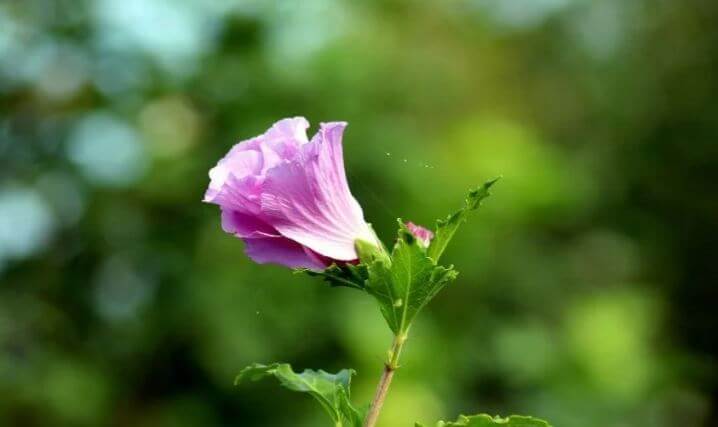
Stressed hibiscus plants are more susceptible to pest infestations. Excessive nitrogen can cause increased foliage growth which in turn, may attract certain pests including spider mites, thrips, aphids, and mealybugs.
Check foliage for signs of a pest presence. Spray your plant with water jets to remove pests. Then treat your hibiscus with insecticidal soap or neem oil. These are organic solutions that will not harm people or pets. Apply your treatment every four to seven days until all signs of pests are gone. Pest infestations can impede flowering.

